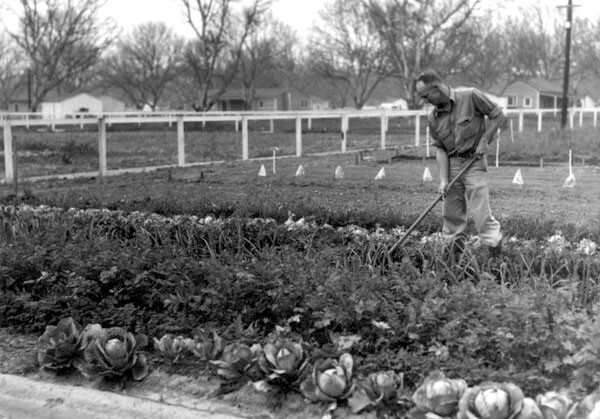L.A. Food System: An Overview
Food deeply connects to the heart of Los Angeles. Dating back to its founding in 1781 by missionaries and rancheros, Angelenos have taken advantage of the abundant arable land to develop a region economically fueled by agriculture. Mild weather combined with a growing number of agricultural workers -- from midwestern farmers moving west, to wealthy East Coast transplants giving it a go out of curiosity -- led to an exponential increase in food production. You could grow anything and sustain your family -- financially and nutritionally -- on the farms in Los Angeles.
As the city developed, home-based, family-run farms helped maintain L.A.'s agricultural tradition. The "small farm homes" trend that began in the 1920s saw developers touting residential lots with up to three acres of land for farming. In 1940, the Los Angeles Chamber of Commerce reported that "nearly half of the Los Angeles food supply originates on farms within 50 miles of the city." By 1949 up to 10,000 small farm homes were counted on record. Richland Farms, one of the last remaining "small farm home" district in L.A. County, began in the late 1800s when Reverend Compton donated the land under terms that it maintain its agricultural zoning. Today, local residents continue to enjoy horses, cowsand crops farmed on their own backyards.

Unfortunately, technology, density and legislation has contributed to the growth of a broken food system. Today the region operates under a global food system that is monopolizing the market and distancing consumers from food. Within 200 miles of Los Angeles, including top-producing counties Riverside, San Diego, Ventura, Fresno and Kern, an abundance of food continues to grow, but is exported elsewhere. Meanwhile small and mid-sized farmers struggle to compete. Today, only 1% of the food consumed in Los Angeles County comes from the region.
Referenced from the curriculum on Nourish, a program of the non-profit WorldLink.
Furthermore the bulk commodities produced by large agribusinesses, composed mostly of soy and corn, has replaced healthy produce in the average diet, contributing to a major obesity and diabetes epidemic. By 2007, 23% of adults in California were obese, of which 7% were diagnosed with diabetes. These numbers continue to increase and cost families, businesses, government and the nation a fortune in health care, with California in debt $24 million in 2007 due to diabetes alone.
An Overview of Agriculture in SoCal
Rachel Surls, County Director at UC Cooperative Extension, "Until the 1950's L.A. County was the top agricultural county in the US... This was it. We grew everything here."
From Diary Farms to Apartments
Larry Yee, Coordinating Director for Food Commons, describes Los Angeles' historically regional food system and the spatial distribution of small farms in the city before overcrowding.
About the City Market
Charlie Quon, a local grocer, talks about his days working in the historic City Market, which once supplied the majority of produce consumed in L.A.
Agri-Business in L.A.
Farming in Los Angeles thrived because of the kind of "built-in marketplace."
Returning to Our Agricultural Roots
Paula Daniels, Chair of the Los Angeles Food Policy Council, breaks down problems in the current global food system.


